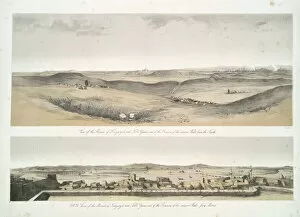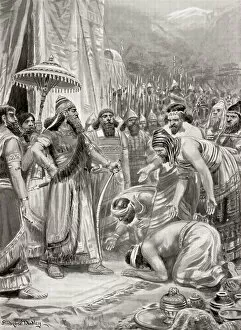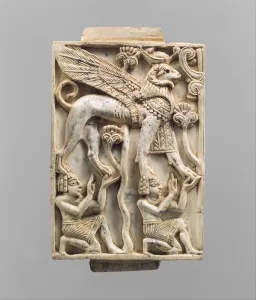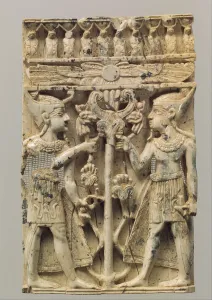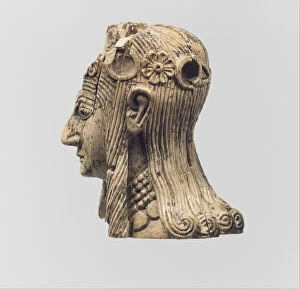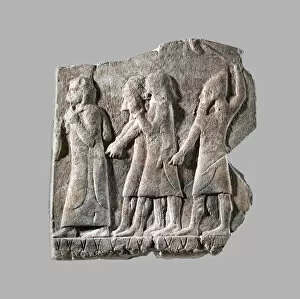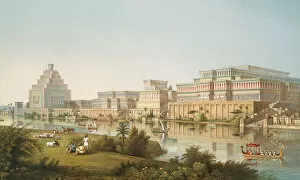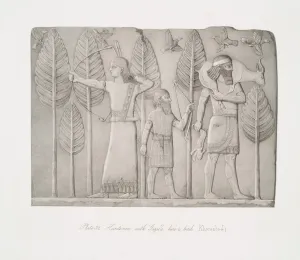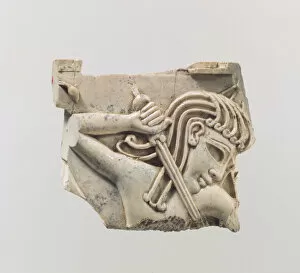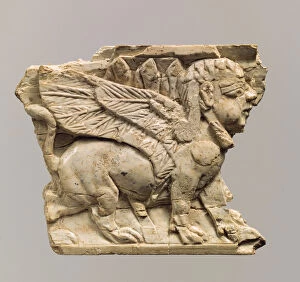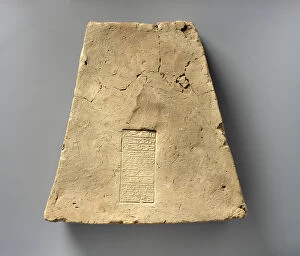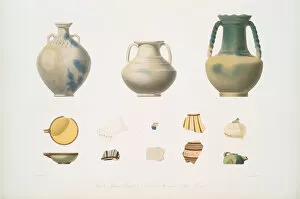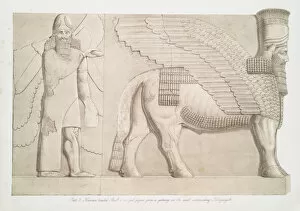Assurbanipal Collection
"Assurbanipal: A Glimpse into the Ancient Assyrian Empire" Step back in time and explore the fascinating world of Assurbanipal
All Professionally Made to Order for Quick Shipping
"Assurbanipal: A Glimpse into the Ancient Assyrian Empire" Step back in time and explore the fascinating world of Assurbanipal, one of the most powerful kings of ancient Assyria. This openwork plaque with a striding sphinx, dating back to the 9th-8th century B. C. , showcases the exquisite craftsmanship that adorned his palaces. Take a virtual tour through history as you witness the breathtaking view of the mounds of Kouyunjik and Nebbi Yunus, where Assurbanipal's grandiose palaces once stood. These architectural marvels were symbols of his reign and displayed his wealth and power. Artistic genius comes alive in "The Death of Sardanapalus, " a study painted before 1827 by an unknown artist. This masterpiece captures Assurbanipal's legendary conquests and depicts scenes from his life, showcasing his dominance over nations. Phoenicians presenting gifts to Ashurbanipal in 876 BC is an illustration from Hutchinson's History of Nations published in 1915. It portrays how other civilizations recognized Assurbanipal's might and paid tribute to him. Intricate reliefs like the wounded lioness panel reveal Assurbanipal II's prowess as a hunter. From Nimrud, Iraq, these limestone carvings depict thrilling encounters between man and beast during royal hunts—a testament to this king's bravery. Delve into everyday life during this era with furniture plaques carved in relief featuring male figures grasping trees or ram-headed sphinxes. These artifacts offer insights into their culture, beliefs, and artistic expressions. Painted bricks from Nimroud provide glimpses into vibrant wall decorations that adorned royal palaces during Assurbanipal's rule. The lithographs created in 1849 capture these colorful murals for posterity. A fan or fly-whisk handle shaped like four female figures showcases the Assyrian's love for intricate and ornate designs.


